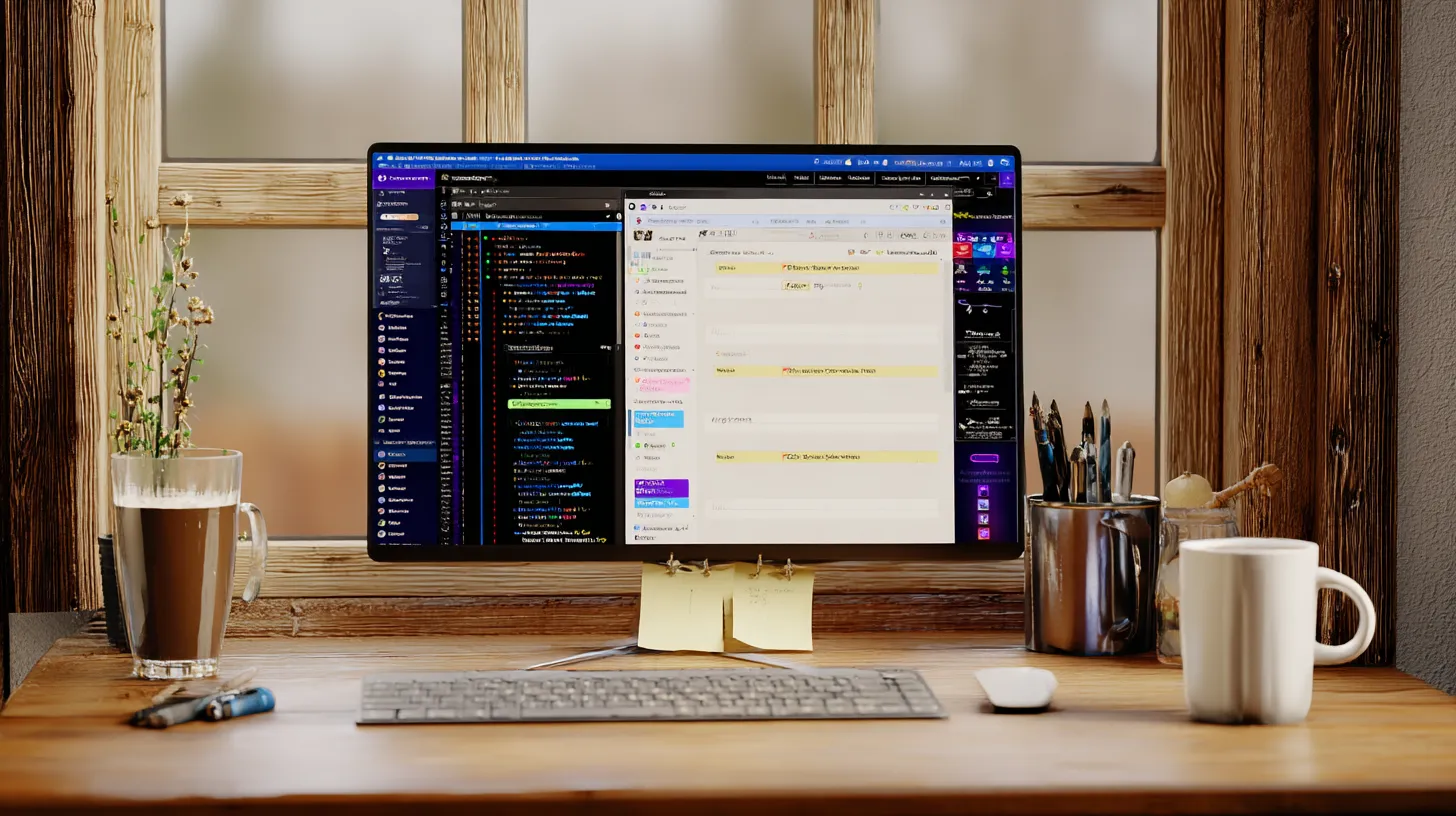· Sarah Johnson · Jobs · 7 min read
Your First Remote Job: What to Expect and How to Prepare
Starting your first remote job? Here’s a friendly, realistic guide to what you can expect — from setting up your space to building healthy routines.

So You Just Landed a Remote Job — Now What?
Whether you’re switching careers, moving away from an office role, or diving into remote work for the first time, welcome. This shift can be exciting, empowering — and, let’s be honest, a little overwhelming.
Remote work offers flexibility, but it also requires new habits, tools, and ways of thinking. This guide is here to help you feel confident and prepared before day one. We’ll walk through what changes, what to expect emotionally and logistically, and how to build a setup that works for your life.
What Makes Remote Work Different
Joining remote teams means adapting to new norms around communication, collaboration, and culture. These teams often work across time zones and rely heavily on written communication to stay aligned. Clear expectations around availability, workflows, and trust become even more important when you’re not in the same physical space.?
In a traditional office, you get routines “for free” — a commute, daily meetings, impromptu chats, lunch breaks. When you go remote, those structures vanish. At first, that feels like freedom. Over time, you’ll learn to build your own rhythm. That could mean adjusting your schedule, creating rituals to start and end your day, or finding ways to separate your work and personal life — even if they happen in the same space.
You’ll also interact with teammates differently. Quick hallway updates turn into Slack messages or scheduled Zoom calls. Expect fewer spontaneous conversations and more deliberate communication. This can feel isolating at first — especially if you’re used to chatting at someone’s desk — but over time, async communication gives you more control over your day.
It’s also worth noting that different companies have different levels of remote maturity. Some have dedicated remote onboarding programs; others are still figuring things out. Ask questions early and often. It’s not a lack of knowledge — it’s part of remote culture.
Daily Routines & Communication

Strong communication habits are essential to navigating your day-to-day in a distributed environment. As part of a remote team, you’ll participate in remote onboarding, status updates, async planning sessions, and sometimes even watercooler chats via chat apps. During your remote onboarding process, you may be introduced to workflows through shared docs, recorded walkthroughs, or live video calls.
One of the first surprises in remote life? How important intentional communication becomes. You’ll be expected to over-communicate at first — letting people know what you’re working on, asking questions in shared channels, and clarifying things you might have picked up casually in person. Be proactive about saying “good morning” or updating a status message when you go heads-down.
Tools like Slack, Zoom, and Notion become your new office. You’ll also likely use asynchronous tools like Loom or Google Docs to share progress. It’s okay to feel awkward at first. Just remember that remote-first teams value transparency and thoughtfulness more than speed.
You might also need to block out deep work time or schedule 1:1 calls to stay connected. Calendars fill up fast in remote companies — especially across time zones — so building habits around communication early pays off.
Pro tip: Book “focus blocks” on your calendar, and treat them like real meetings — with yourself.
Setting Up Your Space

Creating a dedicated workspace is one of the most impactful things you can do for remote success. Even if it’s a small desk in a corner, having a spot where your brain associates “work happens here” makes it easier to get into flow. Try to avoid working from your bed or couch long-term — your posture, focus, and sleep quality will thank you.
Many new remote workers also start exploring local coworking spaces when working from home becomes isolating or distracting. These shared offices offer the benefit of structure, human interaction, and strong internet. They’re also a great place to meet other professionals who understand the remote lifestyle.
You don’t need a Pinterest-perfect home office to get started, but you do need a space that helps you focus. That could be a quiet corner with decent light, a kitchen counter with a laptop riser, or a spare room with a proper desk. The key is comfort, privacy, and consistency.
An ergonomic setup — chair, desk height, lighting — can prevent burnout and body strain. Try to work near a window to get natural light. Make sure your background looks clean on camera, and test your internet connection in advance. A basic ring light and external mic can go a long way.
🔗 Check out our full Remote Setup Checklist for first-timers
If you’re working from a shared space or apartment, consider using noise-canceling headphones, white noise apps, or even a simple folding screen for visual separation.
Focus, Energy & Avoiding Burnout

One of the biggest challenges remote workers face isn’t tech — it’s energy. Without a commute to mentally switch gears, it’s easy to work “just a little more” or blur the line between work and life. You’ll want to build new rituals: start-of-day cues (like changing clothes or making a fresh coffee), scheduled breaks, and true end-of-day shutdowns.
Loneliness can creep in, especially in the first few months. If you’re feeling disconnected, it’s not just you. Consider joining remote coworking calls, turning your camera on more often, or scheduling short chats with teammates — even just to talk about the weather.
Having a plan for breaks — walks, water, lunch without screens — is crucial. Remote work is a marathon, not a sprint. Know when to log off.
Can You Work Abroad?
Yes — many remote workers eventually explore working from other cities or countries. If that’s you, you’ll want to check local internet speeds, coworking options, and (most importantly) visa rules. Many countries now offer digital nomad visas or long-stay options with tax perks.
That said, working abroad adds layers of complexity: time zone shifts, legal considerations, and access to tech support or health care. If you’re just getting started, try taking a short trip to test your setup before committing to long-term travel.
🔗 Here’s our list of Top Remote-Friendly Countries with tax perks and fast Wi-Fi
Tools & Collaboration in Remote Teams

Whether you’re just starting your remote onboarding or working full-time with a distributed team, understanding how your team collaborates is key. Many remote teams organize their workflows using a combination of project boards, shared documents, and recurring syncs.
Most remote-first companies rely on a mix of collaboration software, project management tools, and video conferencing platforms to keep everyone aligned. These tools form the backbone of your online workflow — replacing whiteboards and watercooler chats with shared docs, task boards, and async updates.
Expect to spend time inside tools like Notion, Slack, Trello, Zoom, and Loom. They’re not just apps — they are your new workplace. If your team uses tools like Asana or ClickUp, ask about best practices for updates, deadlines, and tags. Learning how your workspace for teams is organized will help you feel confident fast.
Also take a moment to review your company’s remote work policies. This may include expectations around availability, response times, security, and reimbursements for home office equipment.
Final Thoughts
Your first remote job is a big shift — but one you can absolutely handle. Be patient with yourself. Don’t expect perfection from day one. Build a routine, communicate often, and remember: it’s normal to feel uncertain at first.
You’ll build new habits. You’ll have good days and off days. You’ll figure out your rhythm. And if you ever feel stuck — you’re not alone. The remote world is full of supportive people who’ve been there too.
Want help setting up your gear or workspace? Head over to our Ultimate Remote Work Setup Checklist to get started.



